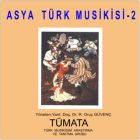Buy or gift a stand-alone digital subscription and get unlimited access to dozens of back issues for just £18.99 / $18.99 a year.
Please register at www.exacteditions.com/digital/cornucopia with your subscriber account number or contact subscriptions@cornucopia.net
Buy a digital subscription Go to the Digital EditionThe traditional tent of Central Asian nomads is a pleasure dome fit for the gods, says Tim Beddow
Sleeping close to nature is always a thrill, a privilege, almost – the crickets, the birds, the wind, early-morning dew… So it was with great excitement that I made a discovery in Gloucestershire. In this rural part of western England a workshop set up by Hal Wynne-Jones is making yurts, the ancient yet sophisticated tents of the nomads of Central Asia.
“The yurt,” maintained the traveller Gustav Krist, “is unquestionably one of the greatest inventions Asia has brought forth. Its circular structure and dome-like roof combine maximum structure with extraordinary stability.” The old Kırgız proverb, “A man’s tent is like a god’s temple”, may be a slight exaggeration, but to stay in a yurt does somehow touch one’s primitive nature – here is a dwelling that is so effective it has needed no redesign in many hundreds, perhaps thousands, of years. The yurt is still in use over a vast area, east from central Turkey and southern Russia to Outer Mongolia and Siberia.
Hal Wynne-Jones has passed his yurt making skills on to enthusiasts around the world.
Contact Turkman Gers on +44 (0)1452 771 212
In the early nineteenth century the redoubtable Englishman John Barker built a country retreat in the province of Hatay, close to the present-day Syrian border, planting his estate with exotic fruit trees, watching over the British Empire’s Indian Mail, and entertaining guests with music on the mechanical organ. David Morray looks back on the golden age of ‘Suedia Hall’
From the art capitals of the world, a round-up of Islamic and Orientalist art
Hekimbaşı Salih Efendi was the last Chief Physician to the Ottoman court, a scholar and a reformer. But plants were his passion. His gardens have gone, but the house lives on. By Patricia Daunt. Photographs: Simon Upton
The Victorian painter Frederick Leighton went to extraordinary lengths to create his pink, black, blue and gold domed Arab Hall in London. By Caroline Juler with photographs by Fritz von der Schulenburg
Süleyman the Magnificent’s city within a city above the Golden Horn has come to house one of the world’s finest collections of books and ancient manuscripts.
When the intrepid Lady Mary Wortley Montagu travelled with her husband’s embassy to Turkey in 1716, she recorded the minutiae of life on the road and in her ‘new world’. . Remarkably open-minded, her innocent observations inspired Ingres to paint some of the greatest erotic masterpieces of the Romantic movement.
‘There are not so many places left where magic reigns without interruption,’ wrote Freya Stark in The Lycian Shore, ‘and of all those I know, the coast of Lycia was the most magical.’ Barnaby Rogerson went with Rose Baring and four-month-old Molly in search of enchantment. Photographs by Faruk Akbas
Its rich, subtle flavour lends itself to a multitude of melting concoctions. Berrin Torolsan traces the story of this most lustrous fruit and serves up an irresistible feast.
More cookery features

TÜMATA The Traditional Turkish Music Research and Promotion Society, Dr Rahmi Oruç Güvenç


Cornucopia works in partnership with the digital publishing platform Exact Editions to offer individual and institutional subscribers unlimited access to a searchable archive of fascinating back issues and every newly published issue. The digital edition of Cornucopia is available cross-platform on web, iOS and Android and offers a comprehensive search function, allowing the title’s cultural content to be delved into at the touch of a button.
Digital Subscription: £18.99 / $18.99 (1 year)
Subscribe now